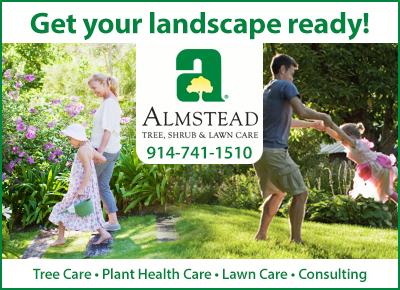Summer Update from Ken Almstead: Common Summer Pests and Diseases

Common Summer Pests and Diseases
We sat down with arborist and CEO of Almstead Tree, Shrub and Lawn Care, Ken Almstead to get the skinny on summer pests and diseases that affect your lawn and garden. This is what he told us:
The summer months bring a wealth of growth and beauty to our landscapes, but they also come with challenges in the form of pests and diseases. As temperatures rise and humidity increases, trees, shrubs, and lawns become more susceptible to a variety of harmful organisms. Recognizing and addressing these issues promptly can help maintain the health and aesthetics of your garden. Here’s a look at some of the most common pests and diseases affecting plants in our region during summer. Please contact us for treatment options.
Pests Affecting Trees and Shrubs

One of the most notorious pests affecting trees in the Northeast is the Emerald Ash Borer (EAB) — see image on left. This invasive beetle targets ash trees, and its larvae feed on the inner bark, disrupting the tree’s ability to transport water and nutrients. Infested trees often exhibit thinning canopies, D-shaped exit holes in the bark, and increased woodpecker activity. Please visit our EAB page for more information.

Another significant pest is the Spongy Moth(also known as Gypsy Moth) — see image on right, which defoliates a wide range of tree species, including oaks, maples, and birches. The caterpillars can strip trees of their leaves, weakening them and making them more susceptible to other stresses. Signs of Spongy Moth infestation include large amounts of caterpillar frass (droppings) and egg masses on tree trunks.

The Spotted Lanternfly (SLF) — see image on left, is now a threat to trees all over our region. This invasive insect primarily targets Tree-of-Heaven but can also affect a wide range of trees and plants, including grapes, hops, and several hardwood species. Spotted Lanternflies feed by sucking sap from stems and leaves, leading to weakened plants, reduced yields, and sooty mold growth. Infestations can be identified by the presence of adult insects, which are easily recognizable by their distinctive spotted wings, and egg masses on tree trunks and other surfaces. Please visit our Spotted Lanternfly page for more information.
Diseases Affecting Trees and Shrubs

Among the diseases, Anthracnose — see image on right, is a common issue for deciduous trees such as oaks, sycamores, and maples. This fungal disease causes irregular, dark lesions on leaves, which can lead to premature leaf drop. In severe cases, repeated infections can weaken the tree over time.

Powdery Mildew — see image on left, is another prevalent disease that affects a variety of trees and shrubs, including dogwoods, lilacs, and roses. Characterized by a white, powdery growth on leaves and stems, this disease thrives in warm, humid conditions. It can stunt growth and reduce the aesthetic appeal of plants if left untreated.
Beech Leaf Disease (BLD) is an emerging threat to beech trees in the Northeast. Caused by a nematode (Litylenchus crenatae), BLD leads to dark, banded interveinal leaf striping and reduced leaf size. Over time, the disease can cause leaf curling, canopy thinning, and eventually tree mortality. The disease spreads through soil, water, and possibly leaf litter, making management challenging.
Almstead Tree, Shrub and Lawn Care provides arbor care, plant health care, lawn care, organic care, consulting, planting and mulch services for commercial and residential clients in Westchester County. They operate four branch offices including one in Hawthorne. (Almstead Tree, Shrub and Lawn Care, 15 Broadway, Hawthorne, 914.741.1510; www.almstead.com)
More Lawn & Tree Care Tips from Ken Almstead.
Tree Pruning Tips from Ken Almstead

















